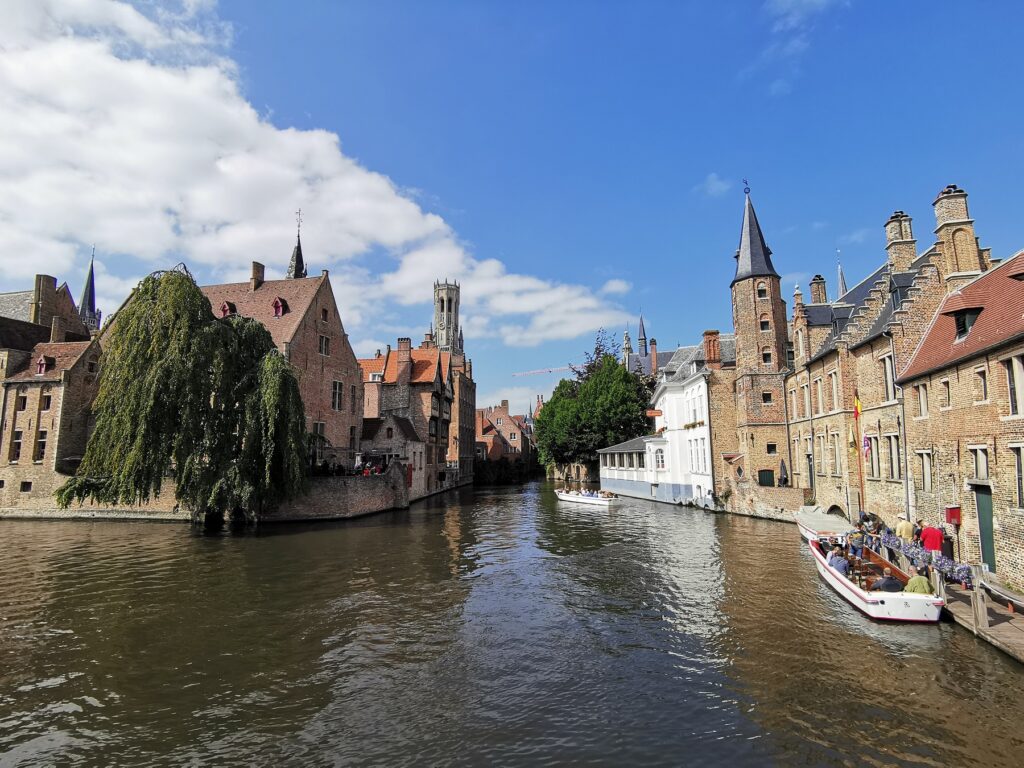INTERVIEW: BRUGES, THE SHIFT FROM “NOT MORE” TO “BETTER” TOURISM
Bruges in West Flanders in Belgium is an iconic destination for tourists. The Covid pandemic has been an opportunity for the city to rethink its tourism towards a softer, more sustainable approach to growth, says Dieter Dewulf, Tourism Manager Visit Bruges. We asked him how tourism has been recovering.
It was not a great spring 2021 for us. According to mobile data counts, Bruges welcomed 1.4 million visitors in the first six months of 2021, equivalent to 40% of 2019 numbers. However, since the summer holidays, we have noticed a turnaround. In July and August, Bruges expected 1.17 million visitors in the historic city centre including 819,000 day trippers and 173,000 overnight tourists. Although hotels did not reach the “usual” 85% to 95% occupancy rate during the summer, the turnaround was also visible. The occupation rate in July was 49% and reached 66% by mid-August.
What are Bruges’ main markets?
Bruges mainly owes its tourism revival to the Belgians. However, we saw more visitors from the Netherlands, France and Germany. Monitoring travel and booking intentions, we expect a return of the British market by the second half of November. It is an important market for us with 20% to 30% of overnight stays and that gives a good feeling. From next year onwards, we hope to see international tourism revive as well.
How is Bruges adapting its tourism marketing?
Now that tourism is on the rise again, many city trip destinations are faced with a dilemma: return to the time of unbridled growth or seize this crisis to take a new path. In Bruges, we have a tradition of guiding tourist development. Since 2002, there has been a stop on holiday homes in the historic city centre ; tourist tours in the city must observe a code of conduct; the number of simultaneous calls for cruises is limited. With such measures, locals continue to support tourism at a rate of 76% in 2019. We made the shift to not “more” but “better” tourism. In our new strategy, we start from the positive power of tourism which, in our view, should not only contribute to the happiness of visitors and entrepreneurs but also and above all of residents.
Before Covid, the emphasis in our actions was mainly on sustainable visitor management. Now we focus on sustainable recovery. Therefore, we put the “added value visitor” at the centre of our campaigns. This is the visitor who takes the time to discover the city, who goes off the beaten track, who is looking for depth while respecting the soul of the place.

How do you match Bruges’ historical image to contemporary travellers’ interests?
A good example is Triennial Bruges 2021, a three-year international contemporary art trail in lesser-known but particularly unique locations. The organisation of this high-quality event is an important stepping-stone towards sustainable recovery. We explicitly focus on the visitor who has and takes the time to discover the city and we create added value for the visitor economy by encouraging an extended stay in the city. The art trail is a balancing act between contemporary art and historical heritage, but above all a “shot in quality” to the benefit of visitors.
Any new products or infrastructure projects?
The BMCC – Bruges Meeting & Convention Centre, a new congress building will be inaugurated in 2022. BMCC will be fully equipped to host hybrid congresses and is completely energy-neutral. With BRUSK, the city authorities underline their commitment to invest in an innovative and contemporary art policy in the heart of the historic town. Both the City of Bruges and the Brugge museums authority see the new museum and art site as a top priority. BRUSK will focus in the future on attracting and organizing innovative exhibitions, with state-of-the-art possibilities for performances and presentations.
